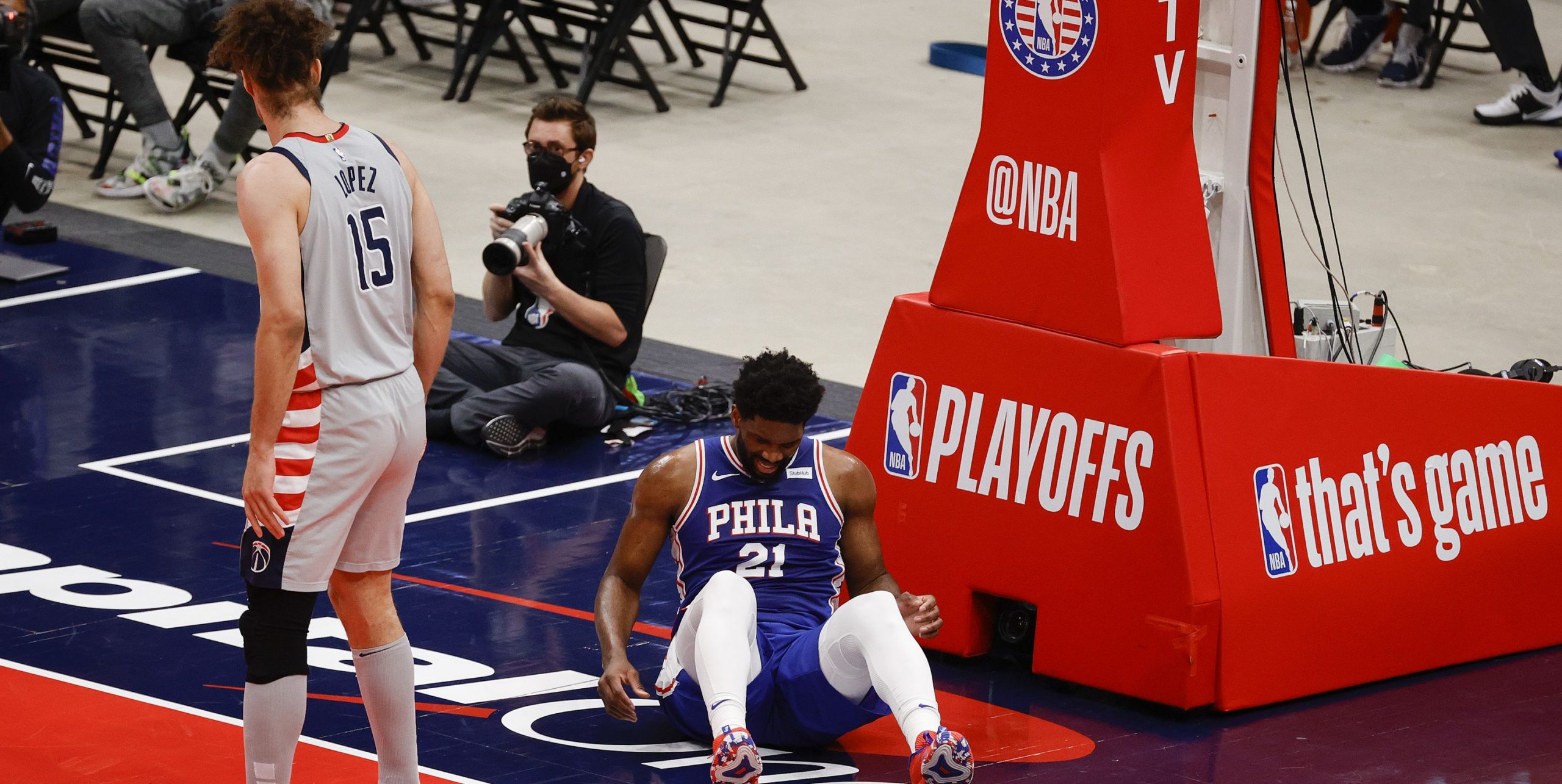
Joel Embiid of the Philadelphia 76ers is out for Game 5 against the Washington Wizards after an MRI revealed a small lateral meniscus tear in his right knee. Embiid is considered day-to-day for now, meaning he’ll be MIA from Wednesday’s playoff game at the very least.
The injury first came to light on May 31 after Embiid took a hard fall during the first quarter of Game 4. The 27-year-old previously tore the meniscus in his left knee, experiencing a season-ending surgery in March 2017. Embiid’s also experienced tendinitis in his left knee back in 2019, along with a bone bruise earlier this year.
But what exactly does all this mean for Embiid and the 76ers? In a video on his ever-popular YouTube channel, Dr. Brian Sutterer, MD breaks down the injury—and Embiid’s chance of returning to the playoffs.
“To be honest, when I first saw this live, I didn’t think of any specific obvious injury pattern just because this doesn’t look like a classic mechanism for anything,” Dr. Sutterer says. “Guys are constantly falling, bending their legs and twisting their knees in funny ways, and [end up] being just fine.”
When replaying the tape with the MRI diagnosis in mind, Dr. Sutterer points out where a sudden flexion of the knee happens, during which the joint turns inward slightly.
“If we think of our meniscus sitting within that knee joint to provide some cushioning, some shock absorption and some force distribution throughout the knee, the meniscus gets loaded whenever that knee is put into more flexion, specifically more of the back and middle portion of the meniscus,” he says. “That transition from a straight knee to a suddenly, rapidly flexed knee with a little bit of inward lean on the right knee, is probably when the meniscus tear could have happened.”
Dr. Sutterer says Embiid being listed as day-to-day is a good sign that he could return to the court this season, even if he has to undergo a surgery in the off-season to get back in long-term playing condition. But, he adds, there are a lot of unknowns that could influence the decision, the biggest being the size and location of the tear.
“If this is some tiny little tear that is not causing him any mechanical symptoms, yeah, I think there’s definitely a chance he can play,” the doctor says. “But if this is some much larger tear that is causing some persistent, continued symptoms, maybe some mechanical symptoms where his knee is locking, then no—I would say it’s much less likely.”
This content is created and maintained by a third party, and imported onto this page to help users provide their email addresses. You may be able to find more information about this and similar content at piano.io
